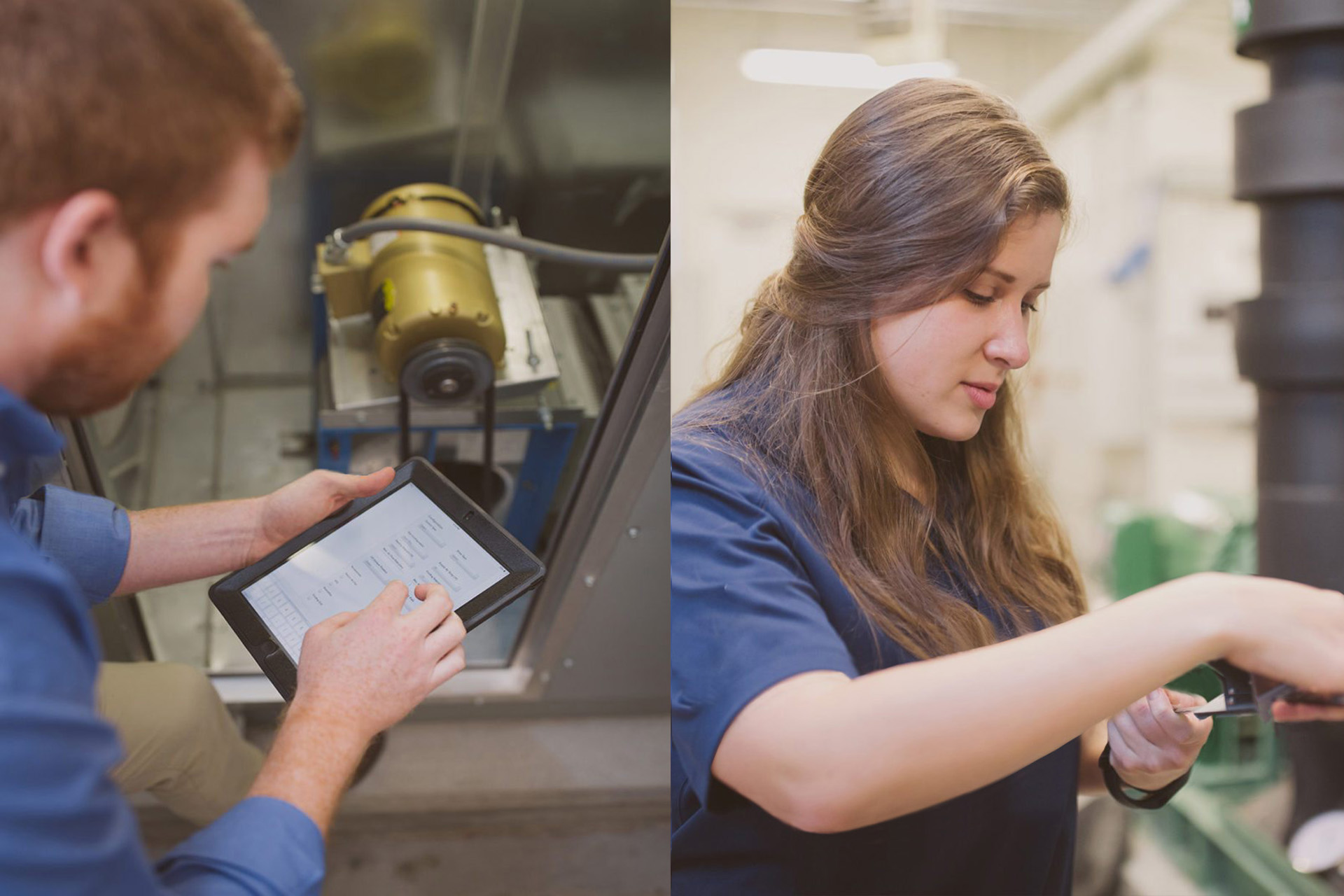With a workforce experiencing extreme temperatures far outside office norms, ranging from very cold to very hot, the Fort Belvoir Public Works team and the Army Corps of Engineers had significant concerns around both workplace productivity and inefficient energy use. With the staff in these spaces focused on addressing serious manpower challenges facing our troops, their ability to perform is critical, and severe environmental distractions could prevent them from completing their best work. After repeated maintenance calls failed to rectify the heating and cooling discrepancies, the Army Corps of Engineers commissioned Clark Nexsen to replace the HVAC, lighting, and fire protection systems in three facilities: Buildings 1445, 1465, and 1466.
As our transdisciplinary team of energy, mechanical, electrical, and fire protection engineers began assessing the existing buildings and designing systems replacement, we quickly gained insight into potential causes, obstacles, and solutions. Our initial investigation uncovered the following key variables:
- We determined the HVAC equipment was actually in reasonable condition in two of the three facilities
- Potential cost estimates showed a significant gap between budget and scope to rectify the situation
- Concerns around phasing and maintenance of work operations for staff became apparent
With these discoveries, our team and the Army Value Engineering team recognized the potential for increased project complexity and cost, and we began exploring new solutions. Given the reasonable condition of the HVAC equipment in two facilities, our team proposed to retrocommission two of the three buildings, leaving the third building scoped for a comprehensive systems renovation, an approach that offered substantial cost savings and more rapid relief to staff.
It was decided to retrocommission Building 1465 – the building with extreme conditions most significantly impacting Army staff. Collaborating closely with Public Works and the Corps of Engineers, our team quickly identified minor cost effective repairs and adjustments that would create a more temperate work environment. Within our team’s first few days on site, grateful employees were emerging from their office space to thank us – sharing that for the first time in years, they felt comfortable.
Our work continued with detailed operational testing of the building systems, gathering additional information about possible improvements to make systems more efficient or address needed repairs. Ultimately, the retrocommissioning of Building 1465 is estimated at $470,681 – just 15% of the originally scoped renovation budget and preliminary estimate.
